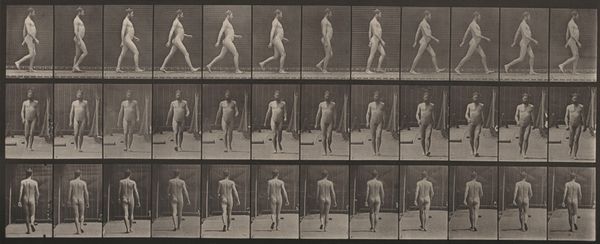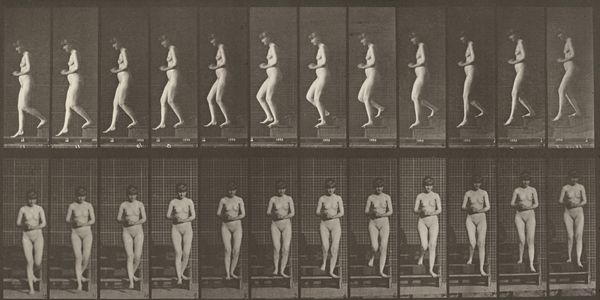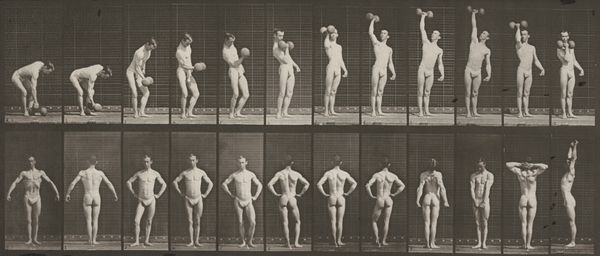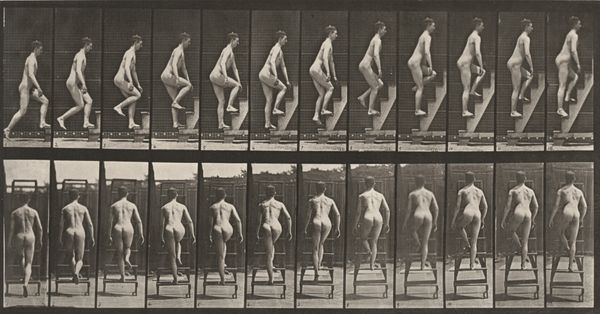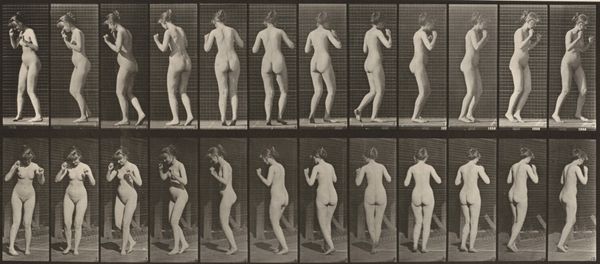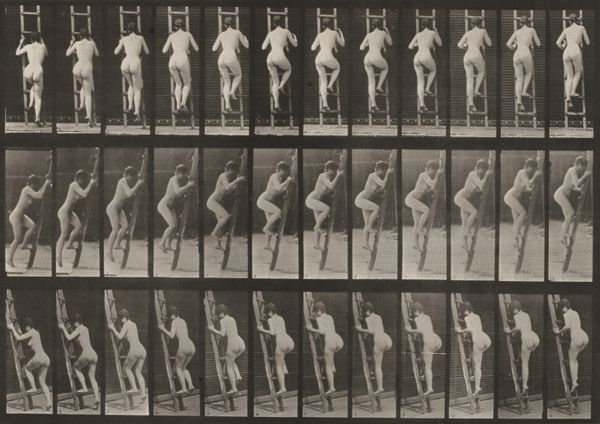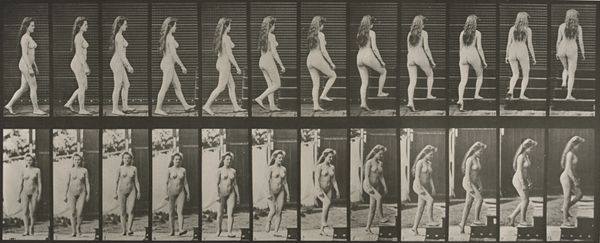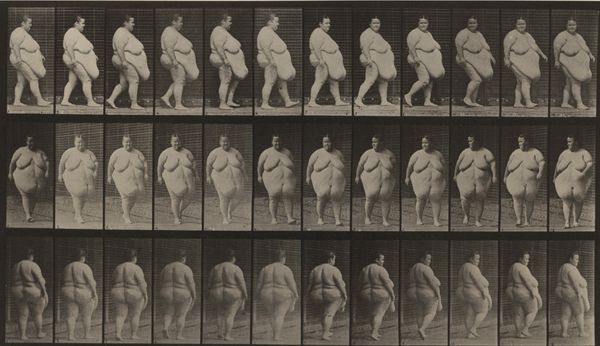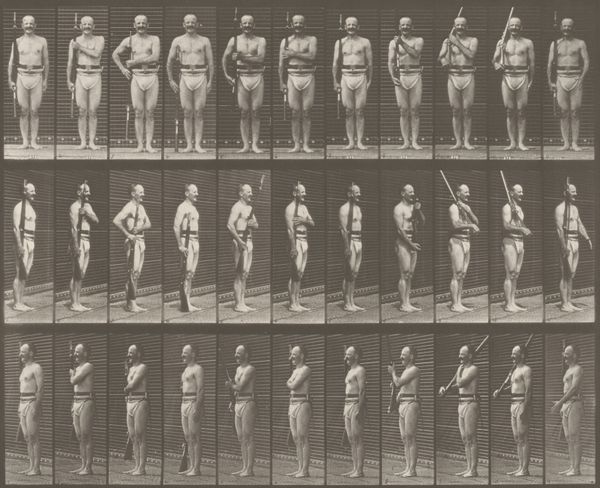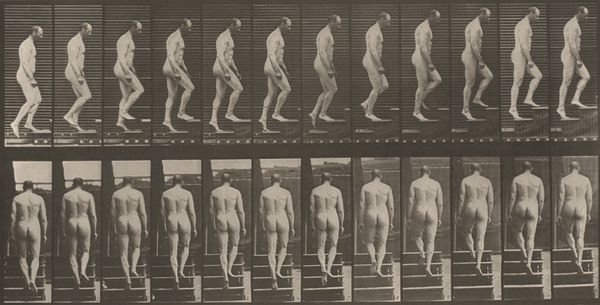
print, photography
# print
#
impressionism
#
landscape
#
figuration
#
photography
#
nude
Dimensions: image: 18.4 × 39.7 cm (7 1/4 × 15 5/8 in.) sheet: 47.8 × 64 cm (18 13/16 × 25 3/16 in.)
Copyright: National Gallery of Art: CC0 1.0
Editor: We're looking at Eadweard Muybridge’s "Plate Number 131. Descending stairs, waving hand," a photographic print from 1887. What strikes me is the grid-like composition and the figure's movement, almost like a flipbook. What do you see when you look at this? Curator: I observe a meticulously structured study of human motion, divorced from overt narrative. Focus instead on the frame's structure. Note the sequential capture isolates segments of action and draws attention to the mechanics of walking: the shifting balance, the arc of the limbs. It reduces the human form to a series of geometric relationships in space and time. Editor: Geometric relationships? Can you explain that further? Curator: Certainly. Observe how the rigid grid contrasts with the fluidity of the figure. Each frame captures a precise pose, transforming a continuous motion into discrete, measurable units. The photograph creates its own visual language with these repeating images. Isn't it curious how he broke down an everyday event to show how to depict movement? Editor: It is fascinating! I hadn't thought about it that way, about capturing movement through shapes. It feels almost mathematical in a way. I was expecting context about Impressionism with the body nude but that structure gives a different context. Curator: Precisely. Context shifts when one attends primarily to composition, to form, to the photograph itself. We observe, we deconstruct and understand its construction. Editor: I see what you mean! Looking closer at the work through form rather than its Impressionistic attributes really highlighted details I had not considered. Thanks for shifting my perspective!
Comments
No comments
Be the first to comment and join the conversation on the ultimate creative platform.
